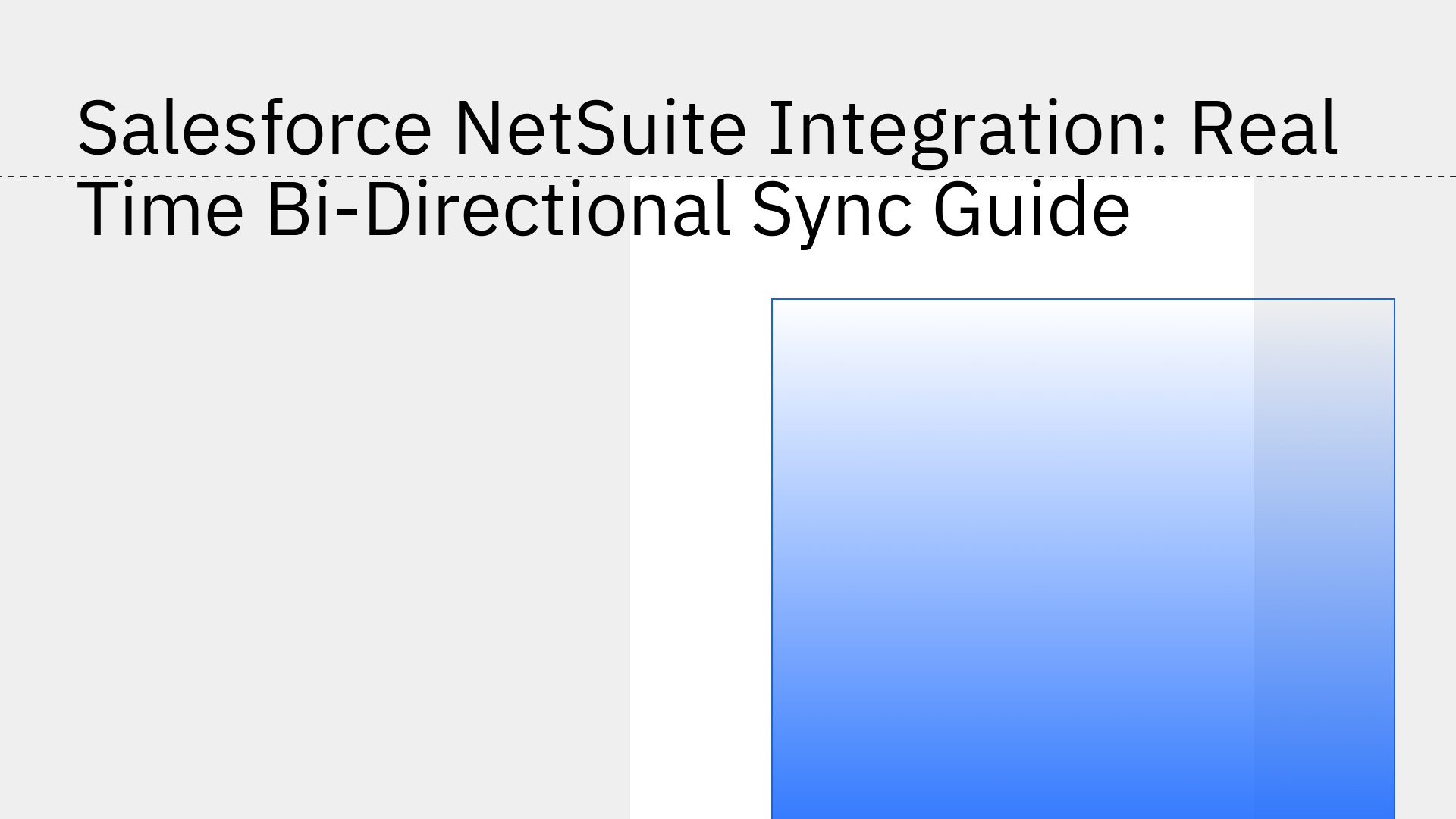
Many mid-market and enterprise companies rely on Salesforce for customer relationship management (CRM) and NetSuite for enterprise resource planning (ERP).
While both are best-in-class platforms, operating them in silos creates significant operational friction. When front-office sales data is disconnected from back-office financial processes, it results in manual data entry, costly errors, operational delays, and a fragmented view of the customer.
To overcome these challenges, a unified data strategy is not just beneficial, it's a requirement for operational excellence. Real-time, bi-directional synchronization is the definitive solution, creating a single source of truth that aligns sales, finance, and operations teams. You can find more strategies for achieving this in The 2025 Guide to NetSuite-Salesforce Integration.
When Salesforce and NetSuite operate independently, teams are forced to bridge the gap with manual, error-prone workarounds. This inefficiency drains productivity, delays revenue recognition, and can compromise customer satisfaction. The consequences of this data disconnect are tangible and disruptive across the business.
Common operational issues include:
These problems result in outdated customer information and inefficient workflows, creating friction that inhibits growth.
To resolve these deep-seated operational issues, simple data imports are not enough. A modern solution requires a synchronization strategy that is both bi-directional and happens in real time.
Bi-directional synchronization is a process where data flows between two systems automatically and in both directions. When a record is created or updated in Salesforce, the corresponding record in NetSuite is updated instantly, and vice-versa.
This process ensures data remains consistent across platforms without manual intervention, effectively creating a single, shared dataset that both systems can read from and write to [5].
Traditional integration tools often use batch updates that run on a schedule, such as hourly or daily. This approach creates data latency, meaning your teams are always working with out-of-date information.
A sales representative might not see a critical payment update, or the finance team may process an order based on old pricing.
In contrast, real-time sync operates with sub-second performance, propagating changes almost instantaneously. The benefit is transformative: sales, finance, and operations teams can trust the data they see, enabling faster decision-making and more efficient workflows. To stay competitive, it is vital to master real-time bi-directional Salesforce NetSuite sync.
When pursuing a salesforce netsuite integration, organizations often evaluate traditional methods that are fraught with technical debt and fail to deliver a reliable, scalable solution. Understanding their tradeoffs is key to making an informed decision.
Building a bespoke integration using the native Salesforce and NetSuite APIs might seem to offer ultimate control, but it is often the most problematic path.
While this approach offers maximum customization, the tradeoff is a rigid, high-maintenance system that often struggles with the reliability and scalability needed for mission-critical processes [4].
Integration Platform as a Service (iPaaS) tools offer a wide array of connectors but are not purpose-built for the unique complexities of a stateful Salesforce-NetSuite synchronization.
The tradeoff for the flexibility of iPaaS is a lack of specialized functionality, making them a poor fit for this specific, demanding use case.
A common but deeply flawed architectural pattern is setting up two separate one-way syncs to mimic a bi-directional flow. This approach is a recipe for data chaos. It introduces severe engineering challenges like infinite update loops and race conditions, making it impossible to manage data state consistently and reliably [6]. This is not a viable long-term solution.
Achieving a robust, real-time integration doesn't have to be a multi-month engineering ordeal. With a structured approach and a purpose-built tool, you can deploy a reliable sync in days, not months.
Planning is the most critical phase. Before implementation, identify the key objects and fields to sync, such as Accounts, Contacts, Opportunities, Products, and Sales Orders. You must also establish clear rules for data governance—for example, deciding which system is the "master" for certain fields and defining how data conflicts will be resolved at the field level.
To avoid the pitfalls of other methods, select a platform engineered specifically for real-time, bi-directional synchronization. This is where Stacksync excels, delivering an enterprise-grade solution that handles these complexities out of the box.
Key features to look for in a solution include:
Stacksync is built from the ground up to provide reliable Netsuite two-way sync integration and workflow automation, enabling teams to build a robust connection without writing any code.
With a dedicated platform like Stacksync, the implementation is streamlined. The process involves authenticating Salesforce and NetSuite, mapping objects and fields via a visual interface, and setting your predefined sync rules. It is absolutely critical to test the integration thoroughly in a sandbox environment before deploying to production. After launch, monitor the sync dashboard to ensure data is flowing correctly and address any issues proactively.
A successful salesforce netsuite integration delivers measurable business outcomes across the organization.
Integrating Salesforce and NetSuite is a foundational requirement for modern operational efficiency. While several methods exist, only a true real-time, bi-directional sync solution can eliminate data silos without introducing new layers of technical debt. By implementing a robust integration, businesses can unlock agility, enhance customer satisfaction, and build a scalable foundation for growth.
Stacksync provides the technology to make this a reality. It's time to optimize your NetSuite Salesforce integration with real-time bi-directional sync and empower your teams to focus on what they do best.
Ready to connect your sales and finance data in minutes?
Start your free 14-day trial with Stacksync and experience the power of true bi-directional sync.